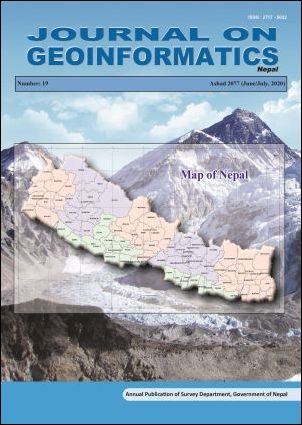Improving Aboveground Carbon Stock Mapping Using Lidar and Optical Remote Sensing Data in Mountain of Nepal
DOI:
https://doi.org/10.3126/njg.v19i1.50964Keywords:
LiDAR, Segmentation, Classification, Carbon StockAbstract
There is a demand for methods to accurately estimate above ground carbon stock in response to climate change mitigation action. The study aims to develop a method to accurately estimate and map above ground woody carbon stocks using airborne LIDAR data (0.8 point/m2) and optical images (0.45m resolution) acquired over the mountains in Central Nepal. Canopy Height Model (CHM) was generated using LIDAR first return and last return. RMSE of 2.8m was obtained for LIDAR derived height. Object based image analysis (OBIA) and nearest neighbor classification methods were used to retrieve individual tree crown area and tree species (Shorearobusta and others) information. Segmentation accuracy was 76.2% based on 1:1 correspondence and the overall classification accuracy was 75.86%. Multiple linear regression models which showed the lowest relative RMSE36.8% (Shorearobusta) and 32.4% (others) were used to estimate carbon stocks of the study area. The total amount of carbon stocks in the study area was approximately 89.45 MgCha-1.




